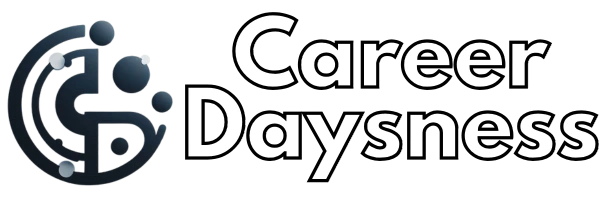
- Understanding the Ideal Resume Length for Canadians
- Why Resume Length Matters
- Factors Influencing the Perfect Resume Length
- Crafting the Ideal Resume Length
- Adapting Your Resume for Different Job Applications
- Common Mistakes to Avoid
- Tools and Resources for Creating the Perfect Resume
- Conclusion: Achieving the Perfect Resume Length
Understanding the Ideal Resume Length for Canadians
Creating a resume is an art that balances content and conciseness. For Canadians, the perfect resume length can be the difference between landing an interview and being overlooked. The debate over how long a resume should be has been ongoing, with opinions varying across industries and experience levels. This article aims to provide a detailed guide on achieving the ideal resume length, tailored specifically for the Canadian job market.
Why Resume Length Matters
When it comes to job applications, first impressions are crucial. Your resume is often the first document a potential employer will see, and its length can significantly impact their perception of you as a candidate. A concise resume showcases your ability to communicate effectively, highlighting the most relevant aspects of your experience and skills without overwhelming the reader. Conversely, a resume that's too long may suggest a lack of focus or an inability to prioritize.
The Risk of a Too-Short Resume
While brevity is important, a resume that is too short might fail to provide enough information to showcase your qualifications. A one-page resume may work for recent graduates or those with limited experience, but for seasoned professionals, it could omit critical details. Striking the right balance is essential to ensure your resume is both informative and succinct.
The Pitfalls of a Lengthy Resume
On the other hand, a resume that is excessively long can be just as detrimental. Employers often have limited time to review each application, and a lengthy resume might result in important information being overlooked. Additionally, it could signal to employers that you lack the ability to condense information, a valuable skill in any professional setting.
Factors Influencing the Perfect Resume Length
Several factors determine the optimal resume length for a Canadian audience. These include your level of experience, the industry you're in, and the specific job you're applying for. Let's explore these elements in detail.
Experience Level
Your professional experience plays a significant role in determining your resume length. For entry-level positions, a one-page resume is typically sufficient. However, as you progress in your career and accumulate more experience, a two-page resume becomes acceptable, allowing you to provide a more comprehensive overview of your accomplishments.
Industry Norms
Different industries have varying expectations regarding resume length. For instance, creative fields such as marketing or design may value a more visually appealing resume, which could extend beyond a single page. Conversely, more traditional sectors like finance or law might prefer a straightforward, concise resume that adheres to conventional standards.
Job Requirements
The specific job you're applying for can also influence your resume length. Some positions may require detailed descriptions of past projects or specific skills, necessitating a longer resume. It's essential to tailor your resume to the job description, ensuring you include all relevant information while maintaining a manageable length.
Crafting the Ideal Resume Length
Now that we've explored the factors influencing resume length, let's delve into strategies for crafting the perfect resume for the Canadian job market.
Prioritize Relevant Information
One of the most effective ways to manage resume length is by prioritizing relevant information. Focus on the skills and experiences that align with the job you're applying for, and omit any extraneous details. Use bullet points to present information clearly and concisely, making it easier for employers to identify your key qualifications.
Utilize White Space Effectively
White space is an important aspect of resume design, as it enhances readability and prevents your resume from appearing cluttered. By strategically using white space, you can make a longer resume appear less daunting while still conveying all necessary information. This technique is particularly useful for candidates with extensive experience who need to include more details.
Include Only Relevant Education and Experience
When listing your education and experience, focus on the most relevant and recent entries. There's no need to include every job you've ever had, especially if they don't pertain to the position you're applying for. Similarly, once you have a few years of experience, you can remove older educational details like high school information.
Adapting Your Resume for Different Job Applications
Adapting your resume for different job applications is a crucial step in ensuring its effectiveness. Tailoring your resume not only demonstrates your interest in the specific role but also allows you to highlight the most relevant aspects of your background.
Customizing for Each Application
While it may be tempting to use the same resume for multiple job applications, customizing your resume for each position can significantly increase your chances of success. By aligning your resume with the job description, you can emphasize the skills and experiences that are most relevant to the role, making it easier for employers to see your suitability.
Leveraging Keywords
Many companies use applicant tracking systems (ATS) to screen resumes before they reach human eyes. To ensure your resume makes it through this initial stage, incorporate keywords from the job description. This not only increases the likelihood of your resume being seen but also demonstrates your attention to detail and understanding of the role.
Common Mistakes to Avoid
When crafting your resume, it's important to be aware of common mistakes that can detract from its effectiveness. By avoiding these pitfalls, you can ensure your resume is both professional and compelling.
Overloading with Unnecessary Information
One of the most common mistakes candidates make is including too much information. While it's important to provide a comprehensive overview of your qualifications, including irrelevant details can make your resume appear cluttered and unfocused. Stick to the most pertinent information and avoid unnecessary elaboration.
Neglecting Formatting and Design
While the content of your resume is paramount, its formatting and design also play a critical role in its effectiveness. A well-organized, visually appealing resume is more likely to capture an employer's attention than a poorly formatted one. Ensure your resume is easy to read, with consistent fonts, spacing, and alignment.
Tools and Resources for Creating the Perfect Resume
Fortunately, there are numerous tools and resources available to help you craft the perfect resume. From online templates to professional resume writing services, these resources can provide valuable guidance and support.
Online Resume Builders
Online resume builders offer a convenient way to create a polished resume. These platforms typically provide a range of templates and customization options, allowing you to tailor your resume to your specific needs. Some popular options include:
- Canva: Known for its user-friendly interface and variety of design options.
- ResumeGenius: Offers a step-by-step guide to creating a professional resume.
- VisualCV: Provides a range of templates suitable for different industries.
Professional Resume Writing Services
If you're struggling to create a compelling resume, consider enlisting the help of a professional resume writing service. These services can provide expert guidance and ensure your resume is tailored to the Canadian job market. Some well-regarded services include:
- Monster.ca: Offers professional resume writing services tailored to various career levels.
- Resume Target: Specializes in creating customized resumes for the Canadian job market.
- TopResume: Provides a range of services, including resume writing, editing, and formatting.
Conclusion: Achieving the Perfect Resume Length
In conclusion, the perfect resume length for Canadians is influenced by several factors, including your level of experience, the industry you're in, and the specific job you're applying for. By prioritizing relevant information, utilizing white space effectively, and tailoring your resume for each application, you can create a compelling document that showcases your qualifications and captures the attention of potential employers. Remember, your resume is often the first impression you make, so invest the time and effort necessary to ensure it reflects your skills and experiences in the best possible light.
By avoiding common mistakes and leveraging available tools and resources, you can craft a resume that not only meets the expectations of Canadian employers but also sets you apart from other candidates. With a well-crafted resume in hand, you'll be well on your way to landing your dream job.



